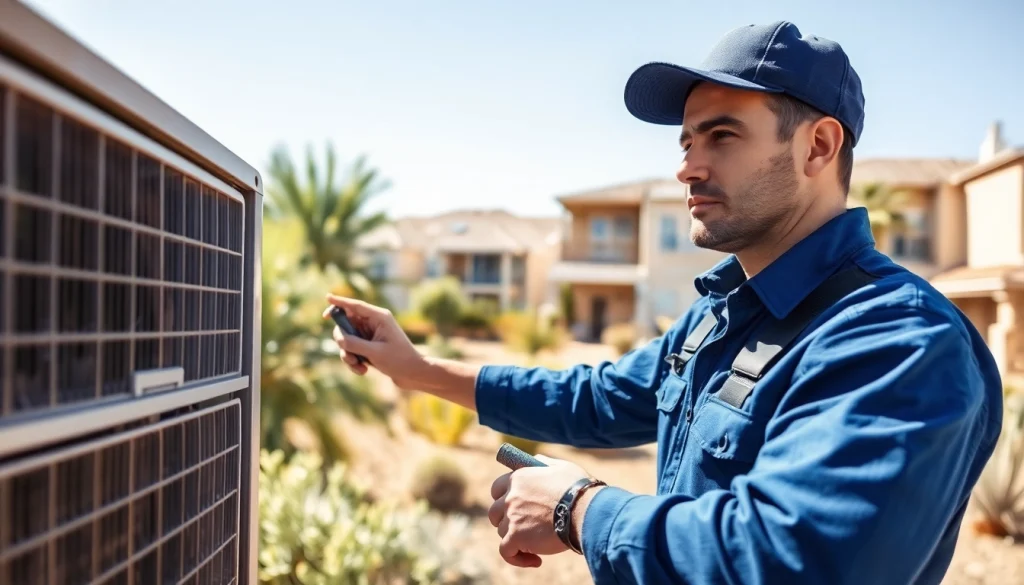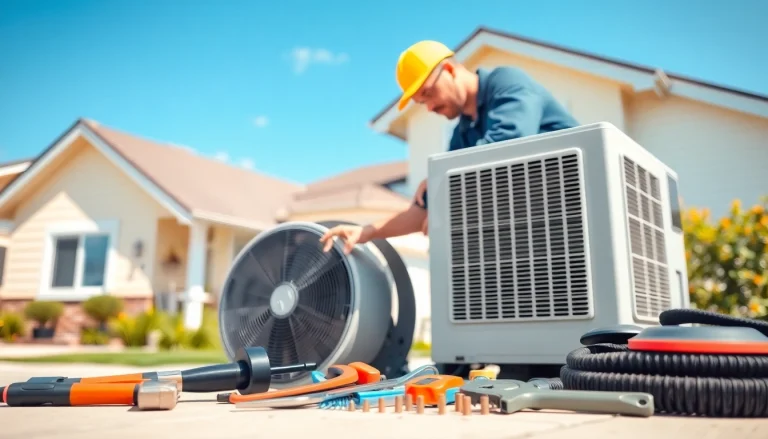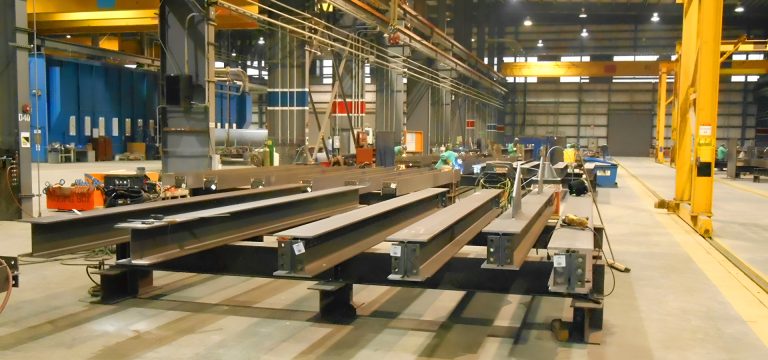
Understanding Scottsdale AC Needs
As the summer sun beats down on Scottsdale, Arizona, residents increasingly turn to their air conditioning systems for relief from rising temperatures. Understanding the unique needs surrounding scottsdale ac systems is paramount for maximizing comfort and efficiency. This article delves into the climate nuances, system efficiency, common challenges, and best practices for ensuring your AC is up to the task.
Climate Considerations for Scottsdale
Scottsdale’s desert climate is characterized by hot summers and mild winters, which means air conditioning systems are essential for comfort. With average summer temperatures exceeding 100°F (37.8°C), understanding the local climate helps determine the best AC systems. Homeowners should consider the duration and intensity of heat waves, which can put a strain on even the best systems, potentially leading to failures if not adequately maintained.
Importance of Efficient HVAC Systems
Given the arid climate, the efficiency of an HVAC system is critical. Energy-efficient units not only lower monthly energy bills but also contribute to a reduced carbon footprint. Homes equipped with high-efficiency systems can maintain comfortable indoor temperatures while using less energy, representing a significant benefit in Scottsdale, where air conditioning is often running for extended hours.
Common AC Issues Faced by Scottsdale Residents
Residents of Scottsdale often encounter various AC issues that can disrupt comfort. These include:
- System Overload: Extended usage in extreme heat can lead to system overloads, resulting in breakdowns.
- Dust Buildup: The desert environment contributes to higher levels of dust and debris, which can impede airflow and reduce efficiency.
- Refrigerant Leaks: These not only hinder performance but can also pose environmental risks.
Choosing the Right Scottsdale AC System
Choosing the right AC system involves several factors. Selecting an air conditioner is not a one-size-fits-all decision, especially in Scottsdale’s unique climatic context.
Factors to Consider When Selecting an AC Unit
Key considerations include:
- Home Size: The square footage of your home determines the appropriate BTU (British Thermal Unit) output needed for effective cooling.
- Climate Control Needs: Homes with larger windows and limited insulation may require units with higher efficiency ratings.
- Budget: Both the upfront cost and long-term operation costs are crucial in choosing a new system.
Energy Efficiency Ratings and Their Importance
The Seasonal Energy Efficiency Ratio (SEER) rating is a significant metric to consider when selecting an AC system. A higher SEER rating indicates greater efficiency, meaning lower energy bills during peak usage times. In a climate like Scottsdale, where air conditioning is often obligatory, investing in a higher SEER-rated system can yield substantial savings.
Comparing Different Types of AC Systems
Several types of AC systems suit various needs:
- Central Air Conditioning: Ideal for larger homes, providing even cooling throughout the space.
- Split Systems: Efficient solutions that can cool individual rooms, offering flexibility and control.
- Ductless Mini-Split AC: Perfect for homes without ductwork, allowing targeted cooling without the need for extensive renovations.
Professional Installation of Scottsdale AC Units
Once you’ve chosen the ideal AC system, the next step is professional installation, which is crucial for ensuring optimal performance.
Steps Involved in AC Installation
The installation process typically includes the following steps:
- Assessment: Evaluating the home’s cooling needs and recommending an appropriate system.
- Preparation: Installing ductwork or necessary infrastructure for installation.
- Unit Installation: Proper setup of the outdoor and indoor units, ensuring all components function together seamlessly.
- System Testing: Conducting tests to confirm the system operates efficiently and effectively.
Benefits of Hiring Certified Installers
Hiring certified installers is key to ensuring your system is correctly installed. Professionals understand the intricacies of local building codes, safety protocols, and best practices, enabling them to avoid costly mistakes. Quality installation contributes significantly to the longevity and performance of your AC system, saving you time and money down the road.
Common Installation Mistakes to Avoid
Being aware of common pitfalls can help prevent issues that could affect your system’s performance:
- Incorrect Sizing of AC Units: Choosing a unit that is too small or too large can lead to inefficiencies.
- Improper Ductwork Installation: This can restrict airflow, resulting in uneven cooling and increased energy consumption.
- Neglecting Local Codes: Skirting regulations can lead to fines and necessitate additional corrections.
Maintaining Your Scottsdale AC for Optimal Performance
Proper maintenance is vital for keeping your AC system running efficiently and prolonging its lifespan. Owners should commit to regular service checks and self-maintenance practices.
Essential Maintenance Practices
Key maintenance practices include:
- Regular Filter Changes: Dirty filters reduce airflow and increase energy usage. Aim to change filters monthly or as needed.
- Annual Professional Inspections: Schedule detailed checkups to ensure all components function properly.
- Clean Coils and Drains: Maintaining cleanliness prevents clogs and helps improve overall efficiency.
Seasonal Tips for Scottsdale Homeowners
As the seasons change, so do the needs of your HVAC system. Here are a few tips for Scottsdale homeowners:
- Before Summer: Schedule a pre-season checkup to ensure the AC is ready for high temperatures.
- Monitor Thermostat Settings: Adjust settings based on occupancy and time of day to optimize performance and save energy.
- Seal and Insulate: Ensure that windows and doors are sealed to maximize cooling efficiency and reduce energy consumption.
Signs Your AC Needs Professional Attention
It’s essential to recognize when your system requires expert care. Common indicators include:
- Unusual Noises: Noises such as grinding, squeaking, or banging can signal mechanical issues.
- Humidity Problems: A malfunctioning AC may not effectively dehumidify, leading to indoor moisture issues.
- Increased Energy Bills: A sudden spike in utility costs often points to inefficiencies caused by a malfunction.
Emergency Scottsdale AC Services
When summer heat hits, having access to reliable emergency services can be a lifesaver. Understanding how to identify emergencies and what to expect during a repair can prepare homeowners for unexpected situations.
Identifying Emergency AC Situations
Knowing when your situation qualifies as an emergency can help you make swift decisions. Emergency scenarios may include:
- Complete System Failure: If the AC not functioning at all, particularly during extreme heat, it is likely an emergency situation.
- Severe Leaks: Refrigerant leaks or water pooling around the unit can cause significant damage if not addressed promptly.
- Electrical Issues: Signs like burnt smells, tripped breakers, or flickering lights indicate electrical hazards requiring immediate attention.
Choosing an Emergency HVAC Service Provider
In the event of an emergency, selecting the right service provider is crucial. Look for these qualifications:
- Certification and Licensing: Ensure that the company is certified and licensed to work in Scottsdale.
- Availability: Reliable providers offer 24/7 service to address emergencies as they arise.
- Customer Reviews: Researching past customer experiences can provide insight into the provider’s reliability and quality of service.
What to Expect During an Emergency AC Repair
When an emergency technician arrives, here’s what homeowners can expect:
- Assessment: The technician will assess the situation to identify the problem quickly and accurately.
- Estimate: You will receive a detailed estimate for the necessary repairs and approximate time to complete the job.
- Repair: Once authorized, the technician will proceed with repairs, ensuring to keep you informed of the progress.






